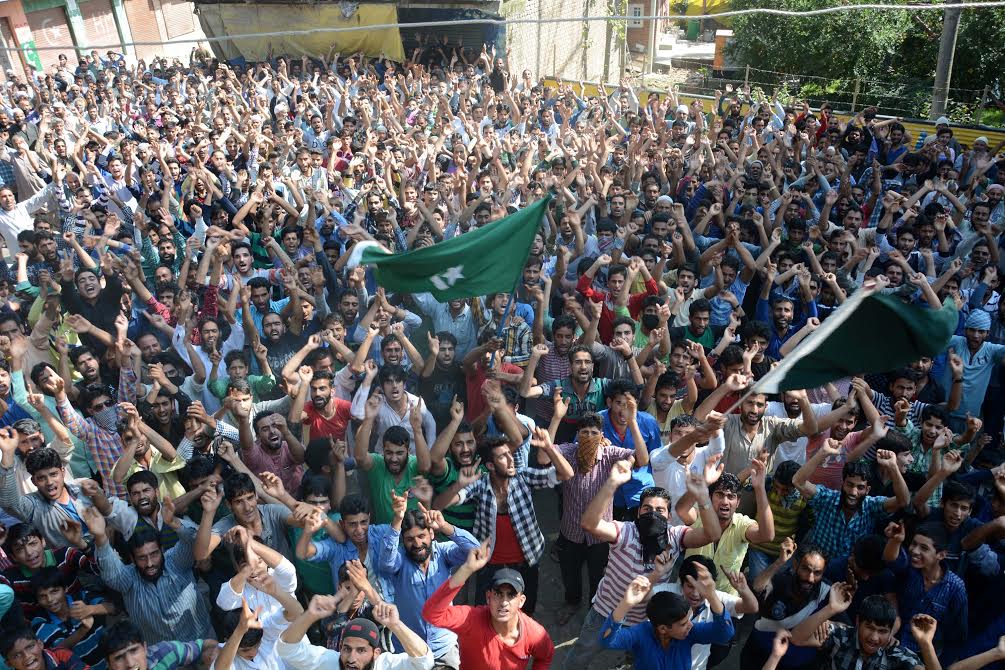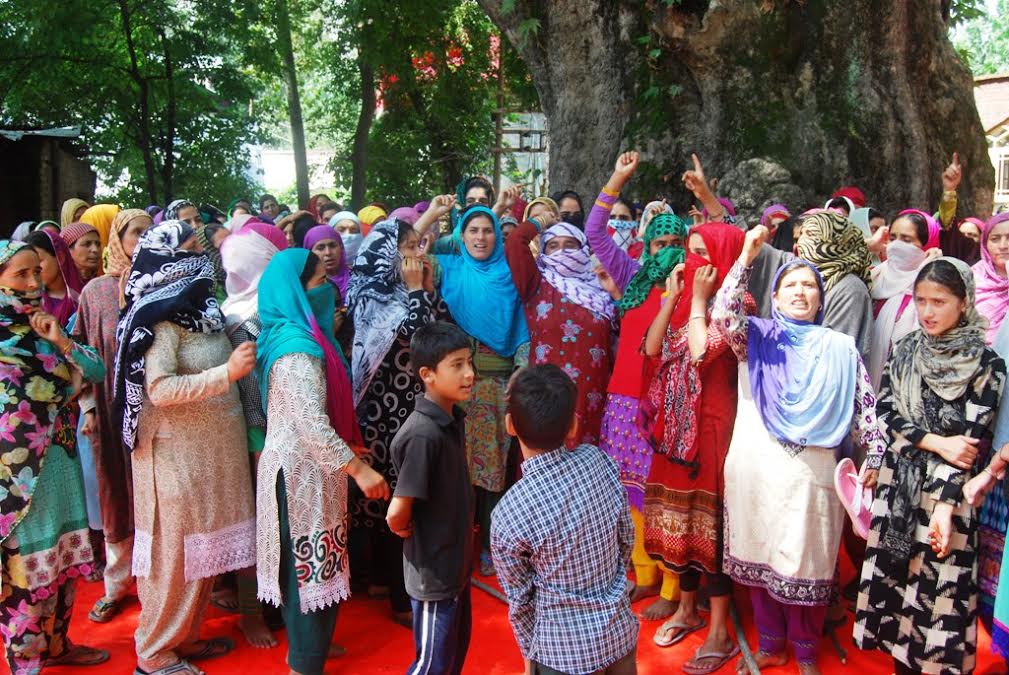by Aakash Hassan

Some scribes have arrived from Srinagar to report restive south. But my nose smells nothing in town, says one in apathy. We are heading toward Bijbehara’s Dachnipora. A source just rang up a scribe: “A rally is going to be held there.”
Our caravan of three two-wheelers comes to halt. On Islamabad-Kanelwan link road, few young boys, not older than 12 had blocked the road. Chanting Ham kya Chahtai in milieu, one seemingly the “captain”, enquires about our journey. We are on move again only after they heard desired answer: “Have to attend rally.”
The children seem dominating the road — even some girl kids are marching in small groups, chanting: “Burhan sai rishta kya, Lailaha Illala.”
We reach Kanelwan. It is jam-packed with vehicle — bikes, cars, load-carriers, and even the customized scooters for disabled. Masked youth make for the common sight.
The rally continues for over one hour. There is no letup of rush on dusty Kanelwan-Akhura road. The slogans are continuously reverberating around. Amid drizzle, women with tearful eyes, prayers on lips and cupped hands towards heavens are bidding marchers adieu. It is Jashn e Aazadi.
Moving down on Seer-Bijbehara road, a scribe from Srinagar says, “it seems some festive season has dawned.” Tehri and water are being offered to passersby. Scribes start interacting with a villager Lassa. He tells scribes to pass a word around that one shouldn’t lose hope.
The scribe covering Kashmir for more than a decade talks about deep sentiment in south this time. “The rural areas are responding differently,” he tells his colleagues. “They are better coordinated this time to run the movement.”
We resume walk. Barely 10 minutes after, another motor rally from Bijbehara cut us short. They only peak the enthusiasm.

This belt has been militancy stronghold during nineties. Even after that, the number never hit zilch. But this is the same area where from PDP started to develop its base. Locals say, Mehbooba Mufti while starting her political career used to throng this belt often — promising amends and relaxations in rules. Despite becoming PDP bastion, the change is now an obvious.
We pass from Bijbehara’s Dara Shikon Bagh, a final resting place of late PDP patron Mufti M Sayeed. A pal of silence is prevalent. The highway is as calm as Jehlum. As we turn toward Hasanpora road, stalls begin to appear — serving water, Tehri.
At four lane highway that bypasses Khanabal, people are heading toward a rally being held by Itihad-e-Milat, a joint organization of Ahl-hadis, Barilwi, Jama’at-e-Islami, JKLF, Hurriyat and other sects. They have been conducting rallies in the interior of Bijbehara since last one month. But this one seems larger than previous ones. Trucks are approaching, ferrying people to Jablipora. A huge rally is just few meters right on the four lane bypass. Thousands have gathered in Eidgah.
Inside, sea of Azaadi seekers have assembled. “This time,” a boisterous speaker roars, “we will achieve our freedom.”
While making sense of surged numbers, one district scribe says people have learned their lessons from 2008 and 2010. “The people were earlier asked to march toward Srinagar or some other major town,” he says, “but today they are mobilizing at periphery level first. It seems working.”
Minutes later, we arrive in Hasanpora, enquiring about families of three people killed. A boy shows us the gutted SOG camp. Killing of three villagers and subsequent attack on mourners smoked up the camp on July 9.
At Khudwani, another rally is swelling. Passing through dusky and constricted roads from Aawrani, we reach the village. A meeting with a family of seven-month-old Aiman, who lost her father stirred emotions. “She doesn’t call her father by any name but recognizes him,” says a tearful Rumi Jan, her mother.
At Qaimoh, we stop at a modest gathering on road. Two militants with masked faces appear on the ambler of a shop, delivering speech. I have never seen a militant before.
“We have left our comfort zones and choose this path to achieve our goal—to liberate our land from the oppressors,” one of them says. Making an emotional appeal, the rebel says, “If you can’t support our cause, please don’t betray us by informing forces.”
I can see men on road, female on rooftop, crying aloud. Villagers want to greet people, but are requested: “Please don’t follow, we are leaving.” After few hugs and handshakes, the rebels disappeared into a rear lane. The locals identify the duo as Lashkar militants.

We head toward DH Pora, a fringe village where revolt remained intense. Otherwise known for huge voter turnout, the village witnessed rage after a village girl Yasmeena was shot dead here on July 9.
At the village entrance, government forces, despite informing them that we are journalists, stopped us, saying, “Jaw Pakistan jao!”
We retreat without putting up any argument.
At past 6 pm, I reach my home in Dialgam amid taranas blaring from mosques. Curfew has been lifted. The evening jaloos procession starts marching. A new-normal starts.
“We never dared to express our open support for militants earlier,” says a village elder, “but it is quite different now.”















